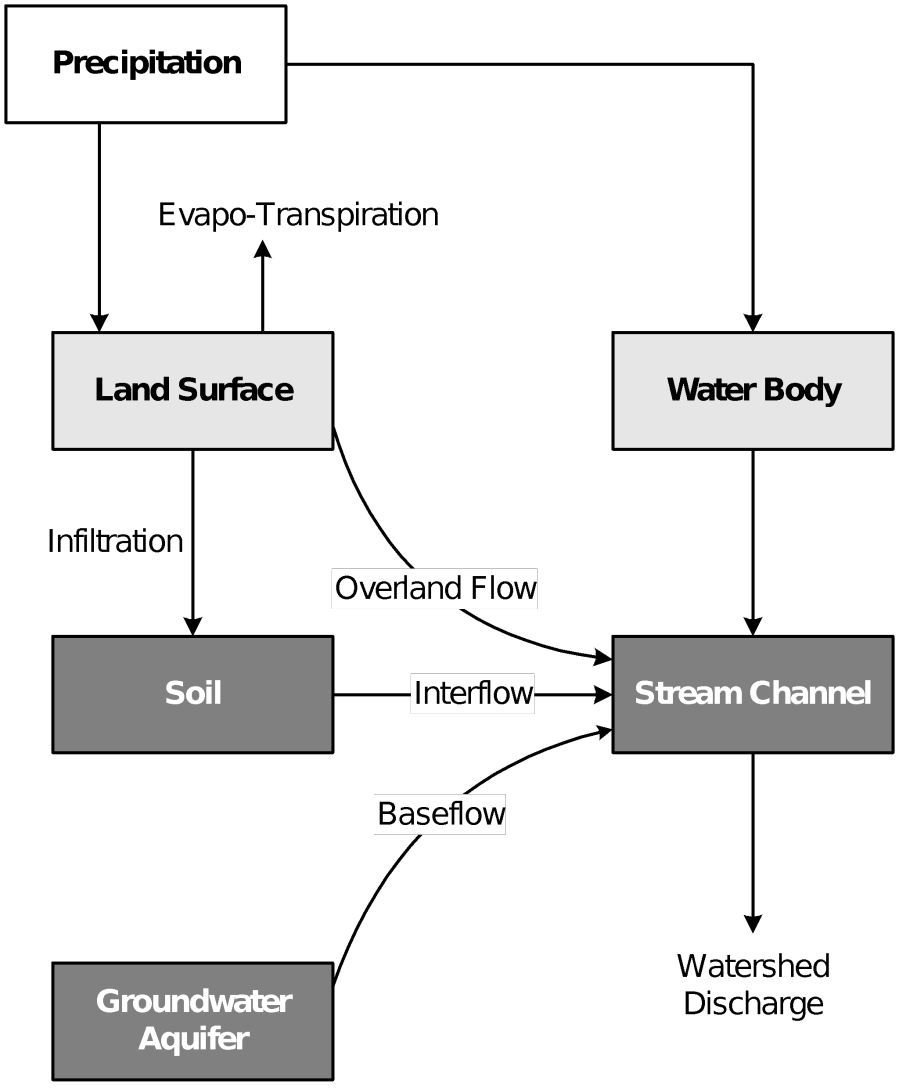The appropriate representation of the system shown in Figure 1 depends upon the information needs of a hydrologic-engineering study. For some analyses, a detailed accounting of the movement and storage of water through all components of the system is required. For example, to estimate changes due to modifications of watershed land use, it may be appropriate to use a long record of precipitation to construct a corresponding long record of runoff, which can be statistically analyzed. In that case, evapotranspiration, infiltration, percolation, and other movement and storage should be tracked over a long period. To do so, a loss method must be selected that is detailed and includes all of the necessary components. The program includes such a method.
On the other hand, such a detailed accounting is not necessary for many of the reasons for conducting a water resources study. For example, if the goal of a study is to determine the area inundated by a storm of selected exceedance probability, a detailed accounting and reporting of the amount of water stored in the upper soil layers is not needed. Instead, only an accurate report the peak, or the volume, or the hydrograph of watershed runoff is required. In this and similar cases, the "view" of the hydrologic process can be simpler. Then, as illustrated in Figure 2, only those components necessary to predict runoff are represented in detail, and the other components are simplified or omitted entirely. For example, in a common application, detailed accounting of movement of water within the soil can be omitted. In this "reductionist" view, the program is configured to include an infiltration method for the land surface, but it does not model storage and movement of water vertically within the soil layer. It implicitly combines the near surface flow and overland flow as direct runoff. It does not include a detailed model of interflow or flow to the groundwater aquifer, instead representing only the combined outflow as baseflow.

Figure 2.Typical representation of watershed runoff.